Abstract
Natural water sources used as drinking-water supplies by rural settlements in Sierra Leone were examined monthly over a one-year period to detect any seasonal variations in bacterial quality. The 37 degrees C colony count, levels of selected faecal indicator bacteria and the incidence of Salmonella spp. were monitored. A seasonality was demonstrated for all the variables, counts generally increasing with the progression of the dry season, culminating in peaks at the transition from dry to wet season. Some complications with respect to the interpretation of counts of faecal indicator bacteria from raw tropical waters are noted.
Full text
PDF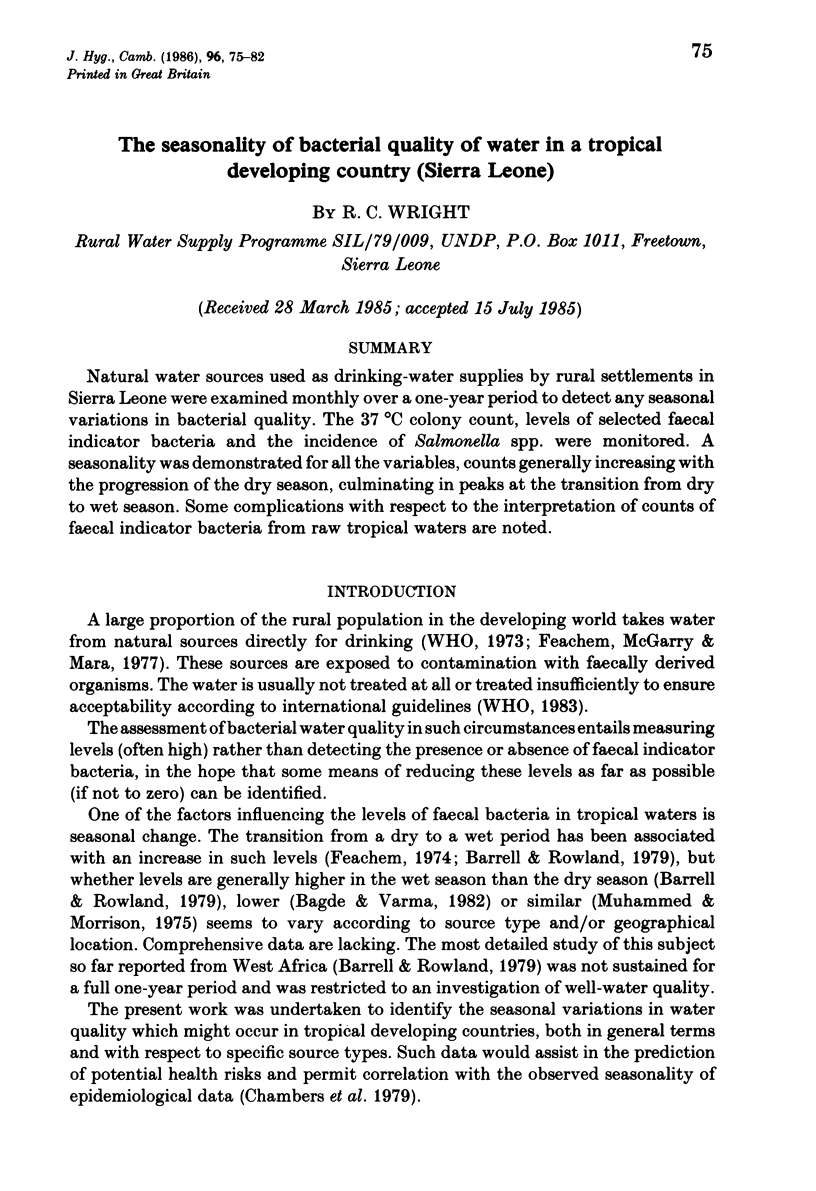

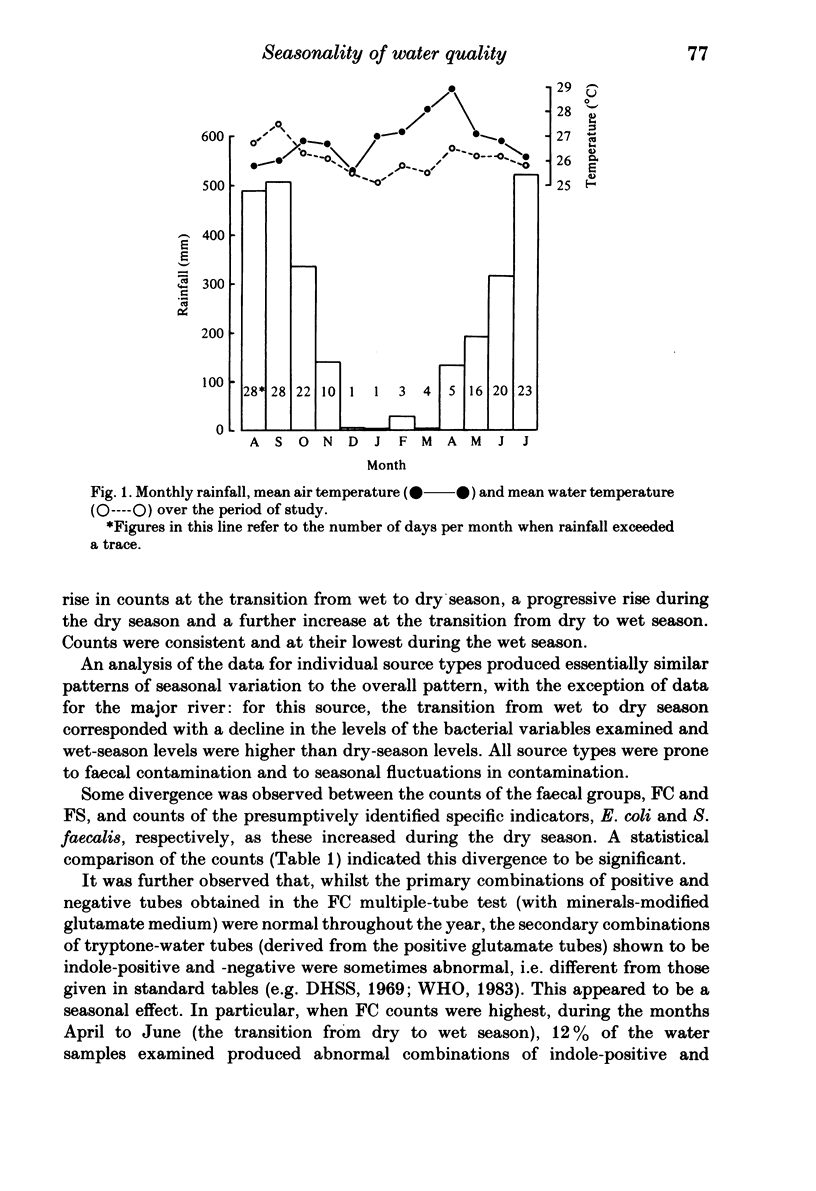

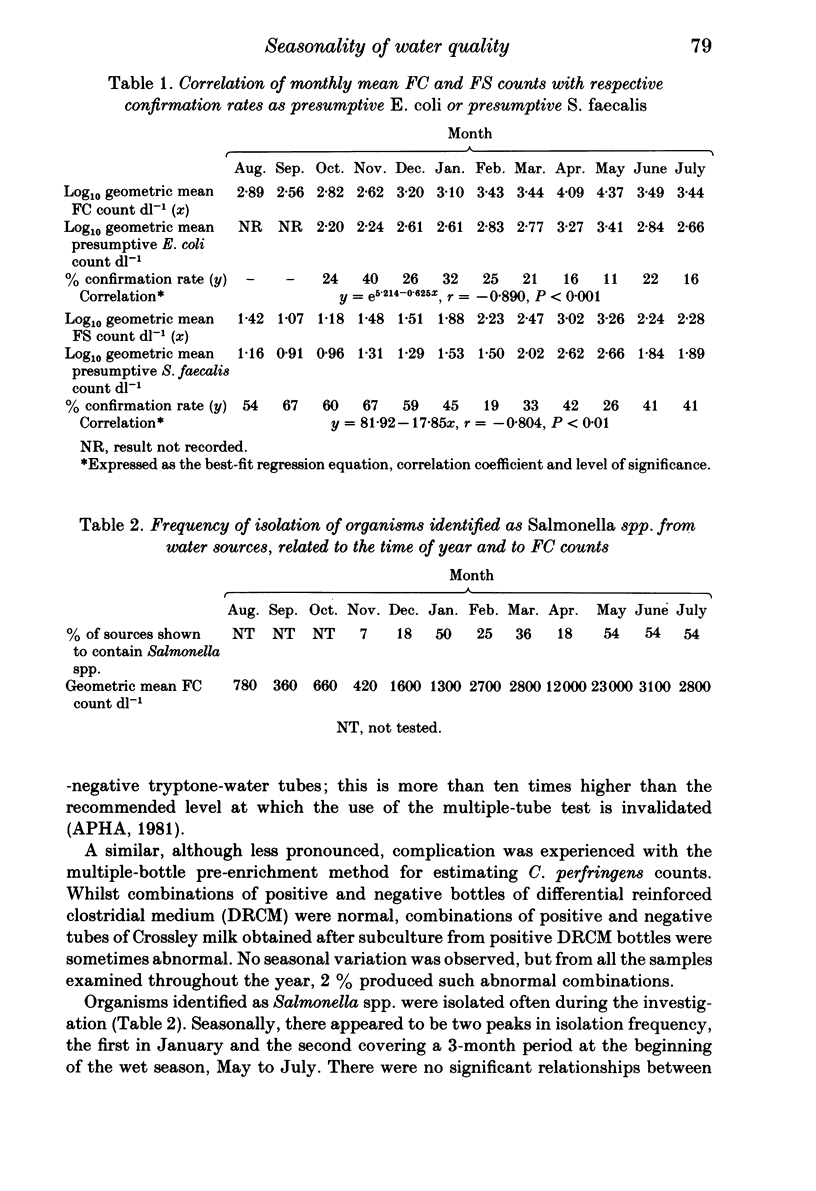
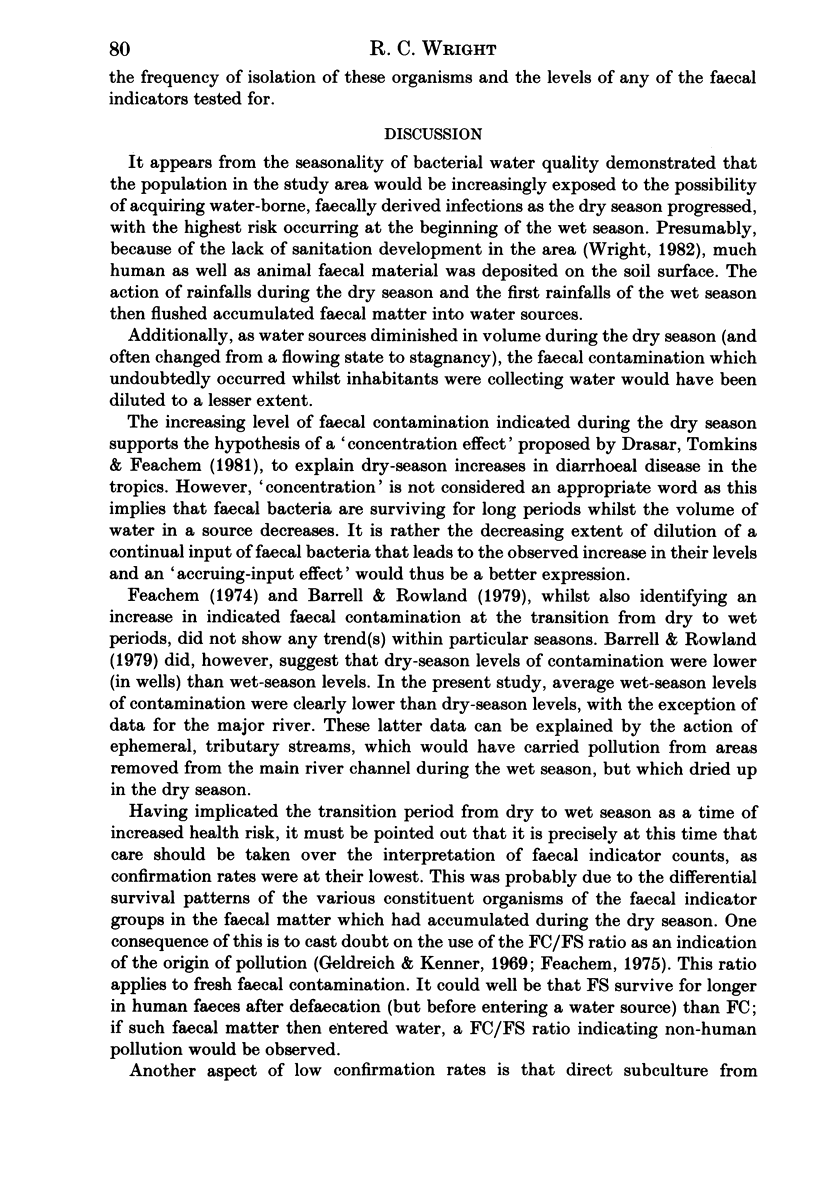
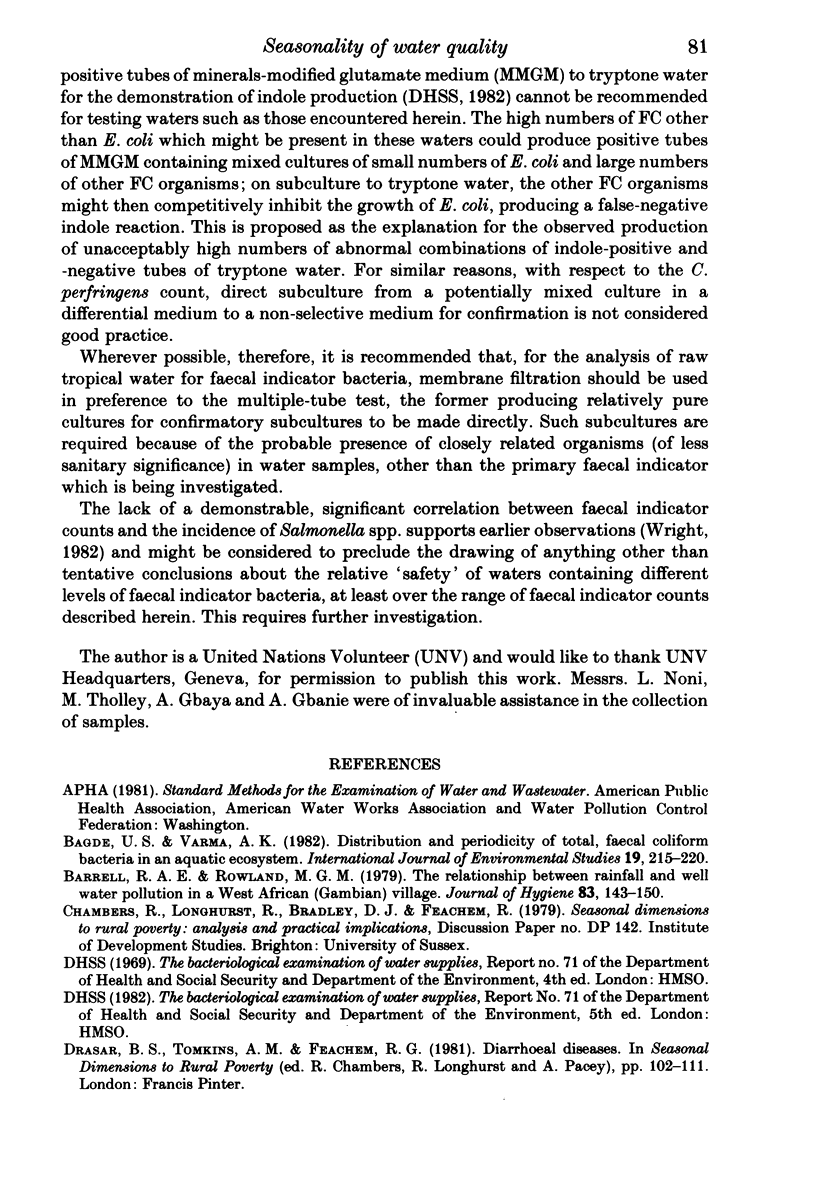
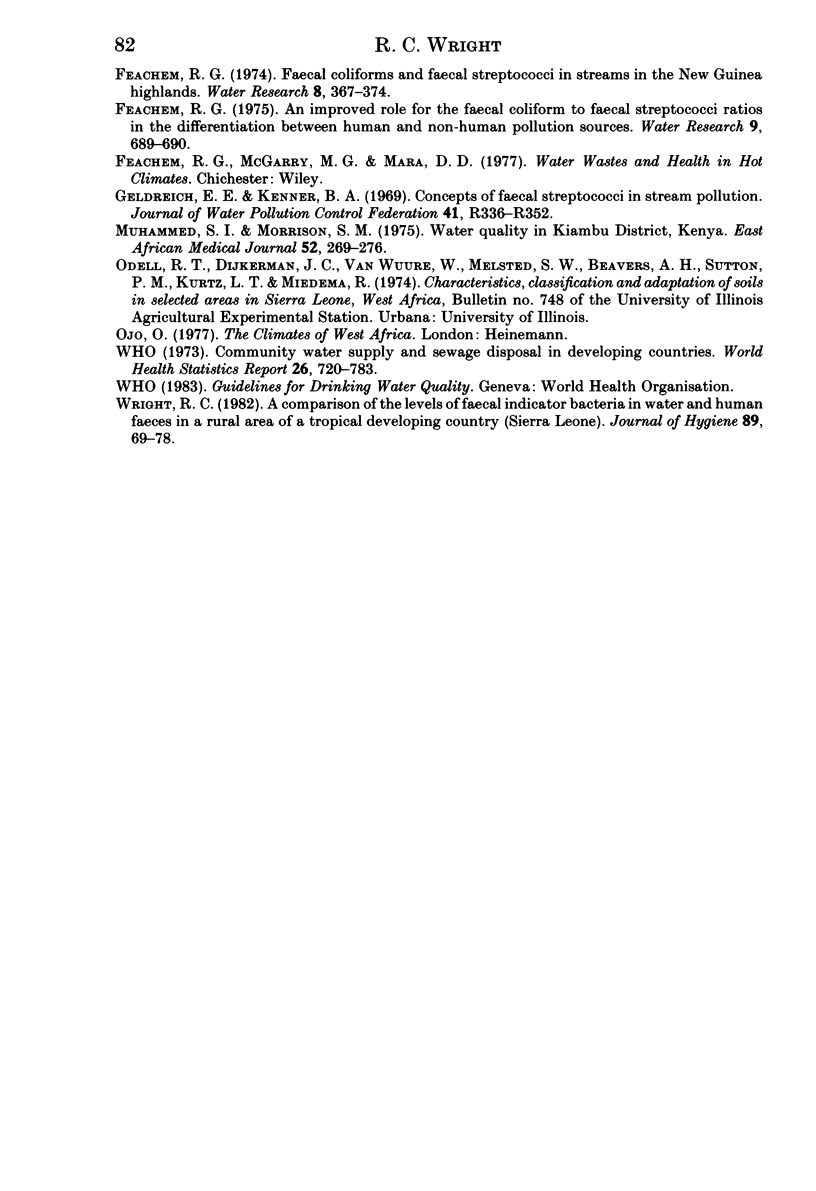
Selected References
These references are in PubMed. This may not be the complete list of references from this article.
- Barrell R. A., Rowland M. G. The relationship between rainfall and well water pollution in a West African (Gambian) village. J Hyg (Lond) 1979 Aug;83(1):143–150. doi: 10.1017/s0022172400025912. [DOI] [PMC free article] [PubMed] [Google Scholar]
- Geldreich E. E., Kenner B. A. Concepts of fecal streptococci in stream pollution. J Water Pollut Control Fed. 1969 Aug;41(8 Suppl):R336+–R336+. [PubMed] [Google Scholar]
- Muhammed S. I., Morrison S. M. Water quality in Kiambu District Kenya. East Afr Med J. 1975 May;52(5):269–276. [PubMed] [Google Scholar]
- Wright R. C. A comparison of the levels of faecal indicator bacteria in water and human faeces in a rural area of a tropical developing country (Sierra Leone). J Hyg (Lond) 1982 Aug;89(1):69–78. doi: 10.1017/s0022172400070558. [DOI] [PMC free article] [PubMed] [Google Scholar]


